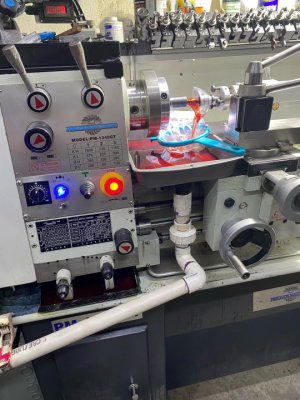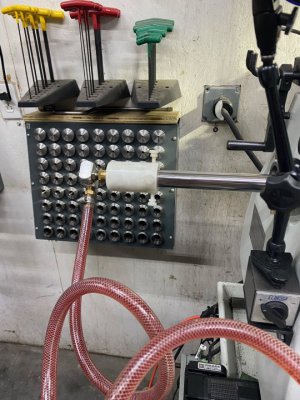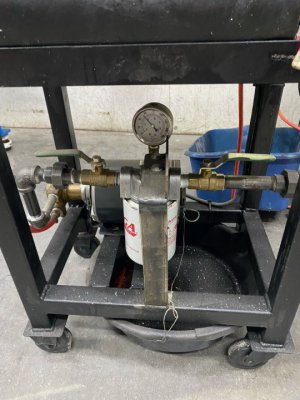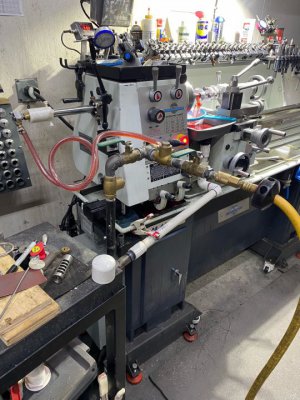Thought I'd share my bore flush project and a little experience about building it. It's coming along pretty nicely.
Made with mostly cheap parts I sourced on amazon, eBay or Craigslist: Used hydraulic pump off an old car lift. Tank found on Amazon. Rotary coupler off eBay with a fitting I made out of a barrel scrap threaded for muzzle brake threads, copper washers seal nicely with no leaks. Pressure relief valve from the hardware store. Very powerful rare earth magnet in aluminum catch tray keeps most chips from getting down the return line. 25u hydraulic filter. Pressure bypass and shut off valve to control flow & prevent air back pressure when clearing. Air valve for clearing chamber to measure before final cut.
I have a couple slow drip connections in the manifold under pressure where I mistakenly used teflon tape. Apparently the tape isn't a good idea with cutting oil. Where I used pipe dope compound no leaks. So I need to take that apart & redo it with the dope.
The rare earth magnet is the most powerful thing I've ever seen. It sucks the chips in from across the pan and does a great job of keeping them out of the return. It'll also bust your knuckles against the chuck if you're not careful! lol It's a little bit of a pain to clean off but not bad. I wear latex gloves to keep from soaking my hands in cutting oil when I do that.
At first I used straight dark cutting oil. That was a bit too viscus to have flow around the reamer bushing. I progressively thinned it with mineral spirits until I liked the flow. It's probably 2:1 now. You can see plenty of flow in the video for flushing the chips.
The bypass valve "sings" a bit with oscillations sometimes. Not sure exactly how to prevent that but a slight tweak in pressure setting or the pressure control valve seems to stop it.





